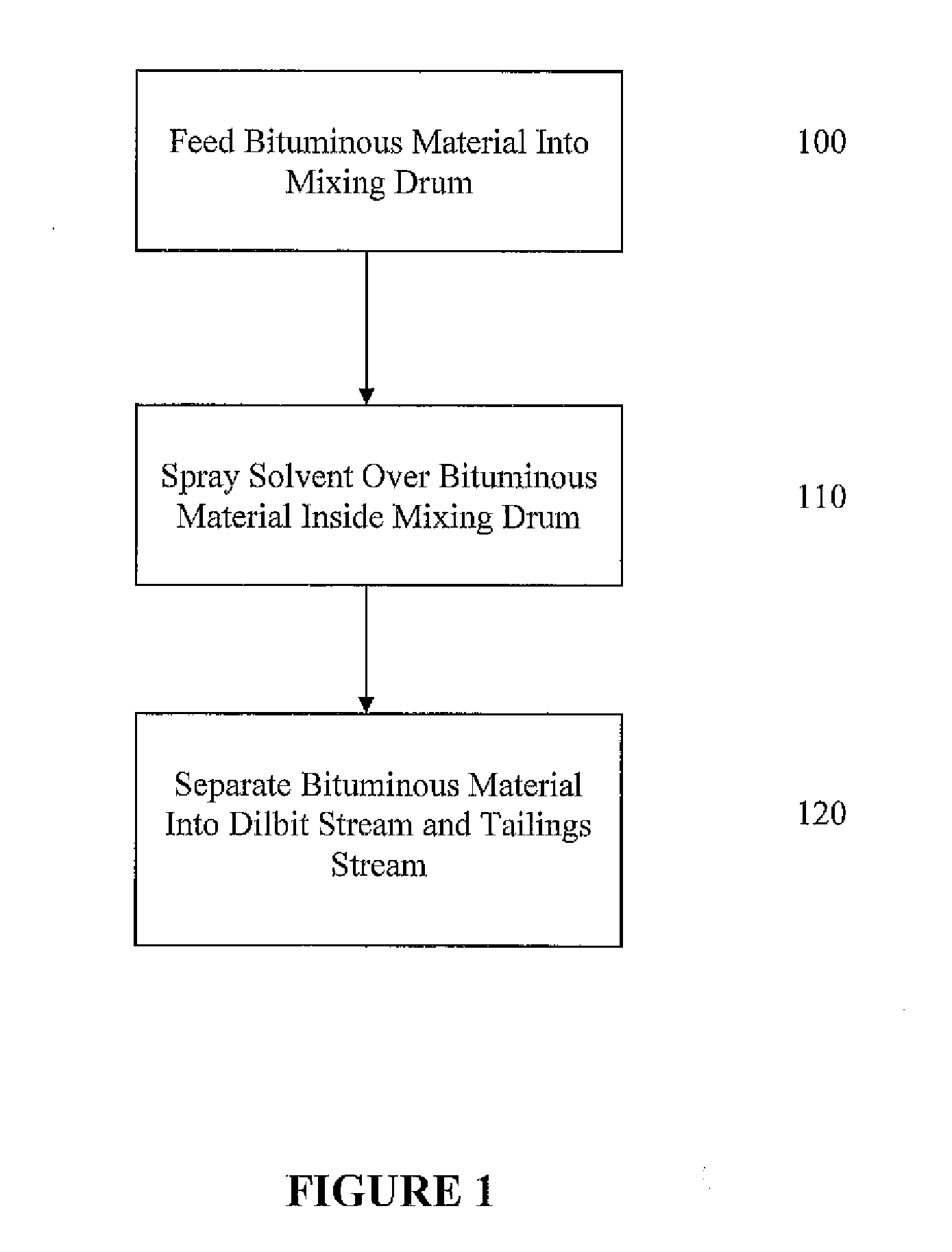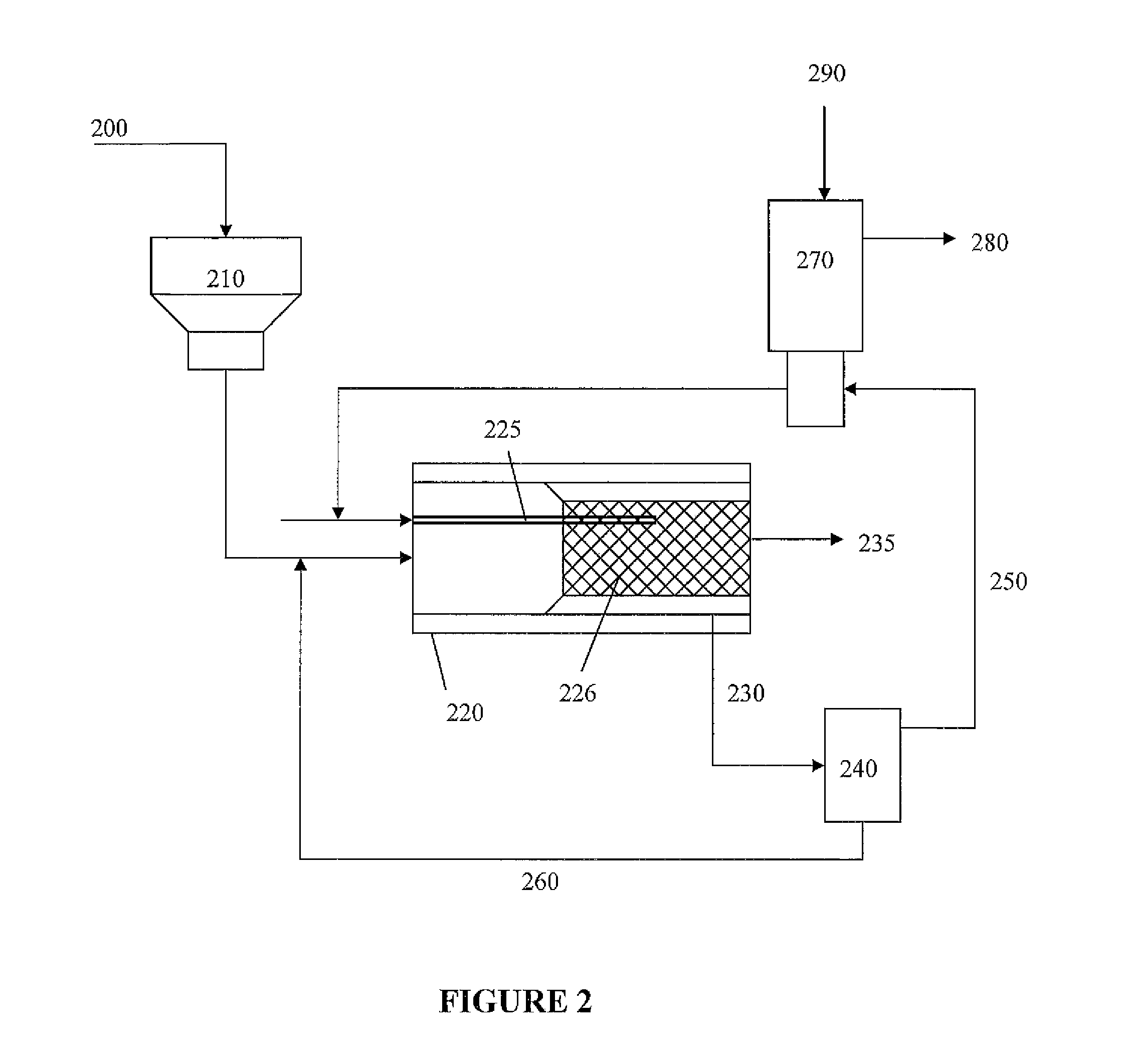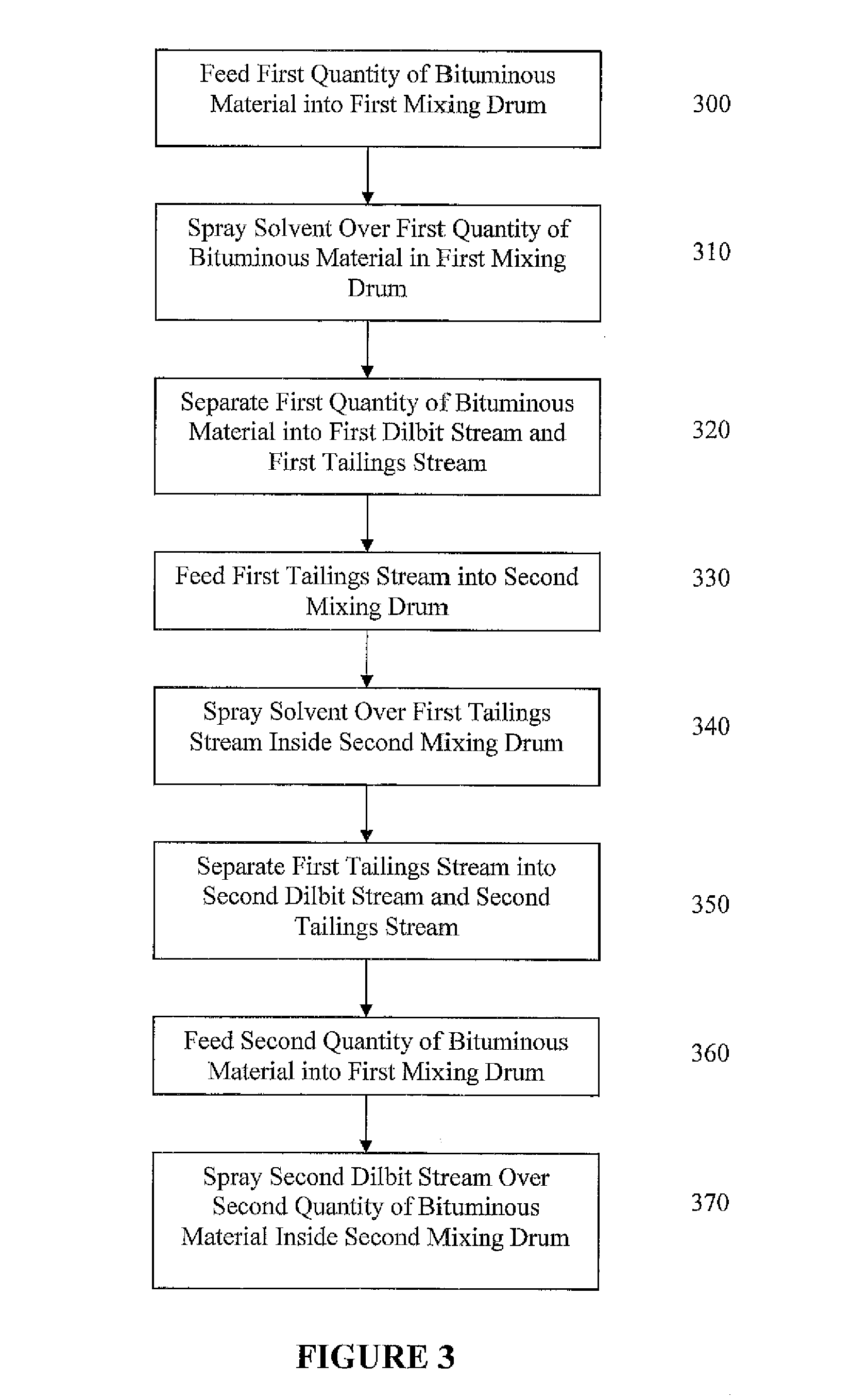Methods and Apparatus for Bitumen Extraction
- Summary
- Abstract
- Description
- Claims
- Application Information
AI Technical Summary
Benefits of technology
Problems solved by technology
Method used
Image
Examples
examples
1. Single Mixing Drum Configuration (Percentage Values in Mass %)
[0168]160 kg / hr of Athabasca oil sands having 84% sand, 11% bitumen, and 5% water content is fed into a mixing drum having an aspect ratio of 1.7 and including a liner screen for separating a slurry produced inside of the mixing drum. Solvent in the form of disbit is sprayed over the oil sand in the mixing drum as the mixing drum rotates at a speed of 2 rpm. The disbit is sprayed over the oil sands at a rate of 52.5 kg / hr. The disbit includes 30.4% bitumen, 0.2% water, and 68.4% Aromatic 150 and has a S:B ratio of 2.25. The disbit and the oil sand mix in the rotating mixing drum for a period of 10 minutes.
[0169]The screen liner in the mixing drum separates the slurry into disbit and tailings. The disbit is sent to a decanter to remove solid particles from the disbit. The decanted disbit is produced at a rate of 36.5 kg / hr and includes 47% bitumen, 0.25% water, and 51.75% Aromatic 150. The solids decanted from the disbi...
PUM
 Login to View More
Login to View More Abstract
Description
Claims
Application Information
 Login to View More
Login to View More - R&D
- Intellectual Property
- Life Sciences
- Materials
- Tech Scout
- Unparalleled Data Quality
- Higher Quality Content
- 60% Fewer Hallucinations
Browse by: Latest US Patents, China's latest patents, Technical Efficacy Thesaurus, Application Domain, Technology Topic, Popular Technical Reports.
© 2025 PatSnap. All rights reserved.Legal|Privacy policy|Modern Slavery Act Transparency Statement|Sitemap|About US| Contact US: help@patsnap.com



